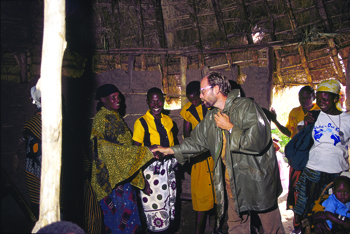When it comes to church structure, the word we’re looking for is hierarchy. From Greek for "holy ruler,” it describes the body of persons in authority within the governance of the church. Could technically be called rule by bishops (from Greek episkopoi for "supervisors"). Starting with the pope, who is bishop of Rome; cardinals, who are themselves bishops; archbishops; bishops; priests, and deacons, who answer to their local bishop; religious orders, and the laity.
A flow chart can help capture the general structure. Think of the pope as first among bishops. Bishops are Vicars of Christ, which means they, like the pope, have the same boss. When all the bishops get together, as with the Vatican or Lateran or Tridentine Councils, their authority is the highest the church can express.

Cardinals were originally priests with permanent parish assignments. In the 5th century, the title was first given to the superior priest at a major church. Cardinal-priests rendered judgments on clergy and laity, and later served as grand inquisitors in determining heresies. Ninth-century Pope John VIII compared their office to the 70 elders Moses appointed to share decision-making (Numbers 11:16). Eventually the term cardinal, meaning “hinge,” denoted priests assigned to important locations (think Los Angeles, Chicago, New York in today’s terms) who advised and consulted with the pope. Cardinals became electors of the pope in the 11th century by decree of Pope Nicholas II. Cardinals formed a corporation called a college. Their office came to outrank bishops, and in 1514 Leo X placed cardinals just under the pope. The 1917 Code of Canon Law made it imperative for cardinals to be chosen from the clergy—previously a layman could be designated. Pope John XXIII shrunk the pool to bishops in 1962. Paul VI confined papal voting to cardinals under age 80. Today, most cardinals are elevated from bishops in prominent dioceses. The College of Cardinals functions primarily as a consulting body for the pope as well as aiding in the governance of the church throughout the world. Reining in these "princes of the church" has been the challenge of many popes.
The Roman Curia is a bureaucracy that runs everything from diplomatic affairs (Vatican City is the world’s smallest sovereign state) to the Congregation for the Doctrine of the Faith to the Vatican newspaper. These offices have traditionally been filled by archbishops and cardinals. Though under Pope Francis, a number of women religious were named to Vatican offices.
Religious orders and institutes fall within serveral areas within the structure of the church. There are four broad categories of orders and institutes: monastic, canonical, mendicant, and apostolic. Monasteries may be autonomous in their governance, while most orders have central authorities. Some groups are limited territorially, and few universal claims can be made about what they do and how they do it. Somewhere along the chain, though, you can bet someone is accountable to Rome.
The laity, or the People of God, have equal dignity to those ordained but not equal power in the regular governance of the church. The laity carry the authority of their baptism and the general sense of the faithful. "The apostolate of the laity derives from their Christian vocation and the Church can never be without it" (Apostolicam Actuositatem). Their main responsibilty is to be holy witnesses of Christ in the world and further the mission and work of the church.
Scripture
• Acts 20:28; Philippians 1:1; 1 Timothy 3:1-13; 5:17-25; Titus 1:5-9;1 Peter 5:1-5
Online
• “Episkopë and Episkopos: The New Testament Evidence” by Father Raymond E. Brown, S.S.
Books
• Inside the Vatican: The Politics and Organization of the Catholic Church by Thomas Reese, S.J. (Harvard University Press, 1998)
• All the Pope’s Men: The Inside Story of How the Vatican Really Thinks by John L. Allen, Jr. (Doubleday Religion, 2004)





